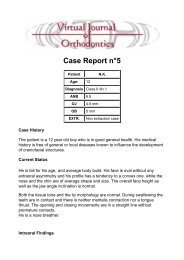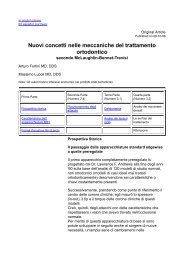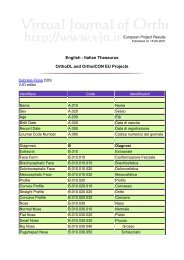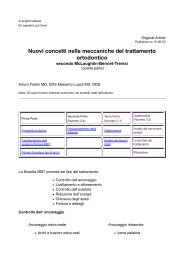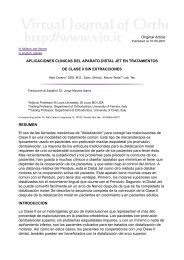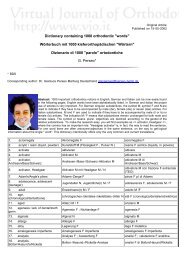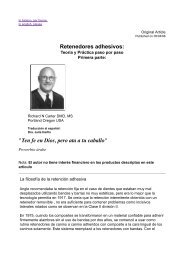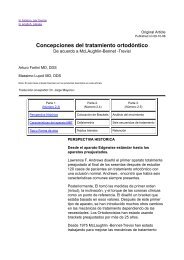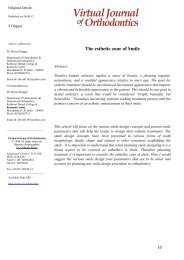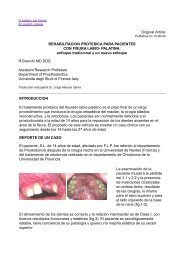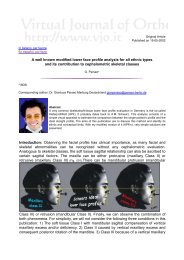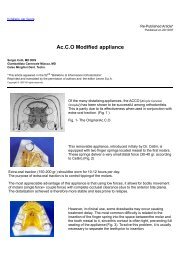Orthodontic treatment conceptions - Virtual Journal of Orthodontics
Orthodontic treatment conceptions - Virtual Journal of Orthodontics
Orthodontic treatment conceptions - Virtual Journal of Orthodontics
You also want an ePaper? Increase the reach of your titles
YUMPU automatically turns print PDFs into web optimized ePapers that Google loves.
<strong>of</strong> Spee leveling and alignment. This is why the authors<br />
thought <strong>of</strong> increasing the lingual root torque <strong>of</strong> the upper<br />
incisors to +17° for the central incisors and +10° for the<br />
lateral incisors and -6° for buccal root torque <strong>of</strong> the lower<br />
incisors.<br />
Cuspids, bicuspids and upper molars<br />
Torque measurements for these teeth are all negative. For<br />
cuspids and upper bicuspids this value is -7°, which is<br />
derived from the original Straight Wire appliance. The<br />
molar values have been changed from -9° to -14° in order<br />
to eliminate occlusal interference <strong>of</strong> the palatal cusps<br />
which occurs when these teeth have excess buccal crown<br />
torque.<br />
Cuspids, bicuspids and lower molars<br />
The authors decided to reduce lingual crown torque for the<br />
following three reasons:<br />
1- Lower cuspids and sometimes bicuspids have little<br />
alveolar bone with gingival recession and can become<br />
worse if the crowns are moved more to the centre <strong>of</strong> the<br />
alveolar protuberance.<br />
2- After maxillary expansion it is necessary to coordinate<br />
arches with the lingual crown tip <strong>of</strong> the lower postieriors.<br />
3- Lower second molars with 35° torque show continuous<br />
lingual tipping.<br />
In/Out measurements<br />
The authors used the same In/Out measurements as the<br />
original Straight Wire appliance after considering them<br />
thoroughly. The only change regards the upper second<br />
bicuspid which suddenly looks smaller than the first one.<br />
For this reason the upper second bicuspid bracket has 0.5<br />
mm more In/Out. In cases where the upper second<br />
bicuspids are the same size as the first bicuspids, it is<br />
possible to use the same bracket for the first and second<br />
bicuspids.<br />
Types <strong>of</strong> MBT brackets.<br />
There are three different types <strong>of</strong> brackets to allow the<br />
patient a choice and to give the orthodontist good control<br />
during <strong>treatment</strong>.



